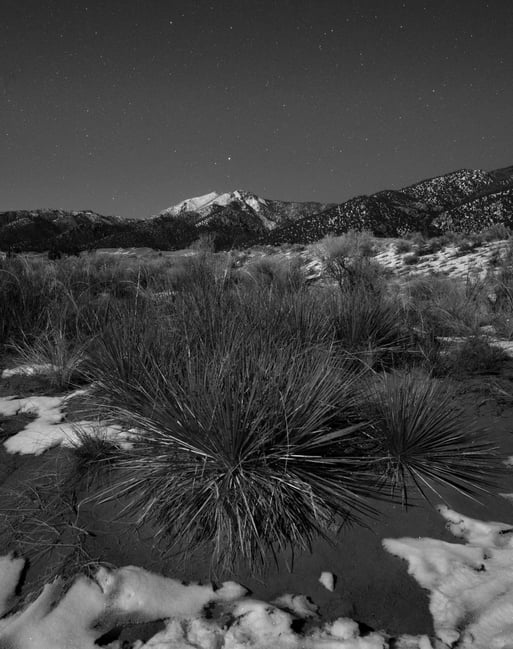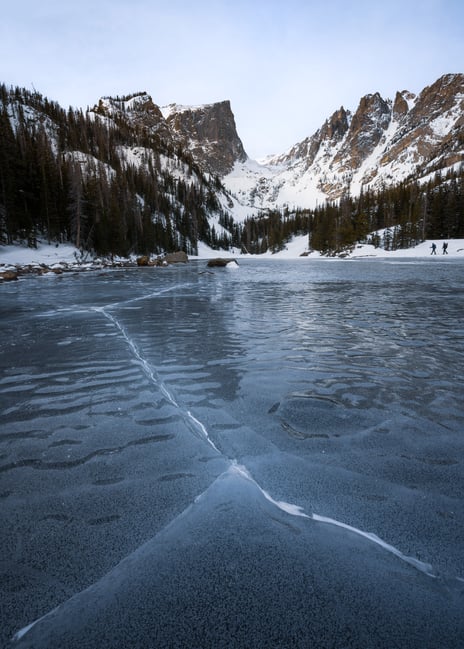Nikon users have several ultra-wide lenses to choose from today. Aside from all the various F-mount and third-party lenses that can be adapted to the Z system, there is also the Nikon Z 14-30mm f/4, Z 14-24mm f/2.8 S, and Z 20mm f/1.8 S.
All three of those lenses are great choices in their own right. As you’ll see below, they also tend to match or beat the Nikon Z 17-28mm f/2.8 in sharpness. I’d argue that you should choose between these lenses in terms of focal length, maximum aperture, and price more than any optical qualities (even though the 14-24mm f/2.8 S and 20mm f/1.8 S are serious optical gems).
Nikon Z 17-28mm f/2.8 vs Nikon Z 14-30mm f/4 S
Compared to the Nikon Z 17-28mm f/2.8, the Nikon Z 14-30mm f/4 S targets a similar weight and price point, but it has a longer zoom range on both ends. The narrower f/4 maximum aperture is the obvious tradeoff, but which lens performs better? Here they are in terms of sharpness, starting with 17mm on the 17-28mm f/2.8:

We actually never tested the 14-30mm f/4 S at 17mm in the lab, but we did test it at both 16mm and 18mm. Here are those results:


The 16mm and 18mm performance on the Z 14-30mm f/4 S are extremely comparable, so it’s no stretch to picture where the 17mm result would lie.
Head-to-head against the Nikon Z 17-28mm f/2.8, neither lens has a huge advantage at these focal lengths, although the performance characteristics are certainly different. The 17-28mm f/2.8 is much weaker in the center at 17mm. The corner performance also favors the 14-30mm f/4, although not by a drastic amount. But because of the significant field curvature on the 14-30mm f/4 S, it has a clearly weaker midframe performance than the 17-28mm f/2.8, especially at f/4.
What about the performance at 24mm? Here are those charts:


The story is pretty similar at 24mm, with the center and corners both favoring the 14-30mm f/4 S, especially at f/5.6. However, the midframe still belongs to the 17-28mm f/2.8 due to its lower level of field curvature. Overall, my verdict is the same: a draw, but with different strengths and weaknesses of each lens.
Finally, here’s how both lenses perform at the long end of their zoom range:


This time, the 17-28mm f/2.8 looks a bit better than the 14-30mm f/4 S in the center, since it beats it at f/4 and roughly ties it throughout the rest of the zoom range. The midframe performance also belongs to the 17-28mm f/2.8 once again. As for the corners, I clearly prefer the 14-30mm f/4 S at f/4, but the results narrow at f/5.6, and by f/8, the two lenses are equal there, too.
Overall, it’s a pretty balanced comparison. As a landscape photographer who favors uniform sharpness across the frame, I could see an argument either way – the 14-30mm f/4 S for its better corners, or the 17-28mm f/2.8 for its better midframe (and still solid corners).

Nikon Z 17-28mm f/2.8 vs Nikon Z 14-24mm f/2.8 S
The other f/2.8 ultra-wide zoom for the Nikon Z system is the 14-24mm f/2.8 S, a high-end, $2500 lens. Because of the difference in price, it’s interesting to see what you’re giving up with the 17-28mm f/2.8 besides the wider view of 14mm.
For the first comparison, here’s 17mm on the 17-28mm lens compared to 16mm and 18mm on the 14-24mm lens:



As with the Nikon Z 14-30mm f/4 S, we didn’t test our copy of the Nikon Z 14-24mm f/2.8 S at 17mm in the lab, so I’ve shown both the 16mm and 18mm performance above. It doesn’t matter which of the two you look at, though – the 14-24mm f/2.8 S beats the 17-28mm f/2.8. This is apparent at every aperture and portion of the frame. Not that I’m surprised, since the Nikon Z 14-24mm f/2.8 S is one of the best lenses I’ve ever tested, and one of only two lenses I’ve ever given a perfect 5.0 star rating.
Here are both lenses at 20mm:


This time, the comparison is a lot closer. The Nikon Z 14-24mm f/2.8 S still blows away the 17-28mm f/2.8 in the center, reaching some of the highest values we’ve ever measured in a zoom. But in the midframe and corners, the 17-28mm f/2.8 holds its own, even beating the 14-24mm f/2.8 S depending on the aperture. The f/2.8 corner result in particular surprised me, with the 17-28mm f/2.8 a bit ahead. That said, stopping down to some more common landscape apertures of f/5.6 and f/8 shows that the 14-24mm f/2.8 S is still king.
Finally, here are both lenses at 24mm:


Even though the Nikon Z 17-28mm f/2.8 is arguably at its best at 24mm, the Nikon Z 14-24mm f/2.8 S is still the better lens. Its central sharpness at this point is simply ridiculous. That said, the corner performance on both lenses is very similar at f/2.8 and f/4, and it isn’t until f/5.6 that the 14-24mm f/2.8 pulls away. My takeaway is that the 17-28mm f/2.8 performed better than expected against the stunning 14-24mm f/2.8 S, even though it’s clearly not as sharp overall.

Nikon Z 17-28mm f/2.8 vs Nikon Z 20mm f/1.8 S
How does the 17-28mm f/2.8 – a non-S zoom – compare to perhaps Nikon’s best ultra-wide prime ever, the 20mm f/1.8 S? It loses, of course. Here are the results from both lenses:


Comparing the center-frame performance of both lenses is practically a joke, with the 20mm f/1.8 S easily winning that contest. Even at f/1.8, the prime lens’s central performance is a good bit higher than the zoom ever gets! The midframe results are certainly closer, though, especially at f/5.6 and beyond. (The 17-28mm f/2.8 actually ekes out a win at f/16 in the midframe, not that it matters.)
As for the corners, the Nikon Z 20mm f/1.8 S is once again the sharper lens, this time at every aperture. Still, it’s not that the 17-28mm f/2.8 puts up a bad performance in the corners. At f/2.8, it remains completely usable. It’s just that the Nikon Z 20mm f/1.8 S is so good. Overall, the 17-28mm f/2.8 never had much of a chance in this comparison, but it put up a better fight than I expected.

Our Thoughts
Spencer: Now that we see how the 17-28mm f/2.8 stacks up to the competition, I’m pretty happy with this non-S zoom.
Nasim: Let’s be honest, it was never going to beat the 14-24mm or 20mm f/1.8. I was hoping it would reach the levels of the 14-30mm f/4, and I was actually surprised that it does.
Spencer: This makes for a really interesting dilemma if you’re considering the 17-28mm and 14-30mm lenses. Do you need a greater range of focal lengths, or do you need f/2.8? The image quality doesn’t really favor either of them.
Nasim: Keep in mind that the 14-30mm is about $150 more expensive than the 17-28mm. I also expect that difference to rise with Nikon’s sales, because the 17-28mm f/2.8 is likely going to see steeper discounts. If someone is really on the fence, the 17-28mm could be the way to go. Just wait for it to go on sale.
The next page of this review sums up everything and explains the pros and cons of the Nikon Z 17-28mm f/2.8. So, click the menu below to go to “Verdict”:
Table of Contents